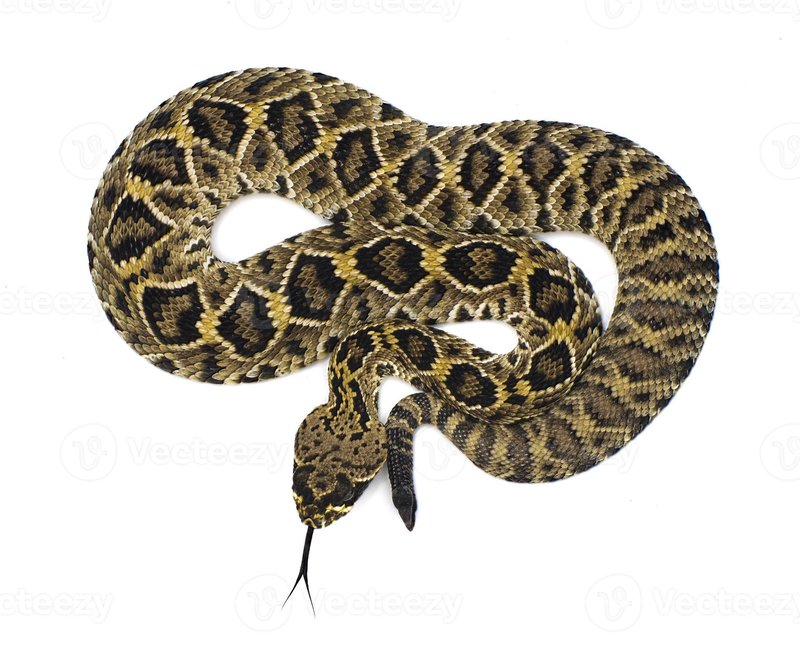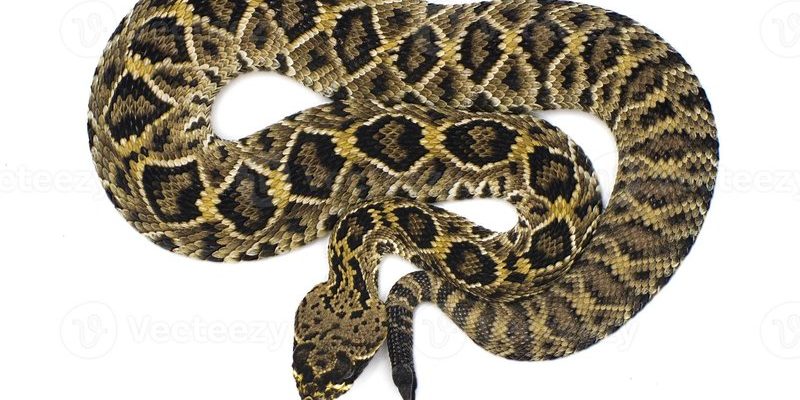
The Diamondback Rattlesnake is one of North America’s most recognizable and fascinating reptiles. With its striking patterns and distinctive rattle, this snake commands attention wherever it slithers. You can find these reptiles in a variety of habitats, from deserts to forests, showcasing their adaptability. But there’s much more to these snakes than just their looks. They play a crucial role in the ecosystem, helping control the populations of small mammals and insects.
Imagine a warm, sunny day in the Southwest. You’re on a hike, enjoying the sights and sounds of nature. Then suddenly, you hear a distinct rattle—like a warning bell. That’s the Diamondback Rattlesnake, letting you know it’s nearby. In this article, we’ll dive deep into the world of this remarkable snake, exploring its characteristics, behavior, habitats, and more.
Physical Characteristics
The distinct appearance of the Diamondback Rattlesnake sets it apart from other snake species. Its body is known for its diamond-shaped patterns, which serve as excellent camouflage against the rocky desert floor. Typically, these snakes measure between 3 to 6 feet in length, though some can grow even larger. Their thick bodies are covered in a range of colors, from grayish-brown to a deeper tan, adorned with dark diamonds along their backs.
Equipped with heat-sensing pits located just above their lips, these snakes can detect warm-blooded prey even in the dark. This is an incredible adaptation for hunting, especially since they primarily feed on small mammals, birds, and sometimes insects. Their venom is a powerful tool, aiding them in capturing prey and defending against threats.
One of the most distinguishing features of the Diamondback Rattlesnake is, of course, its rattle. Located at the end of their tail, this rattle consists of interlocking segments that produce a characteristic sound when vibrated. This serves as a warning to potential predators and humans alike, signaling that they should keep their distance. But don’t let the rattle fool you; these snakes are generally not aggressive unless provoked.
Habitat and Distribution
The Diamondback Rattlesnake is primarily found in the United States, particularly in the Southwest regions, including Arizona, Texas, and New Mexico. They thrive in a range of environments, from arid deserts to rocky foothills and even grasslands. Their ability to adapt to various habitats is one reason they are so widespread. You might find them basking in the sun during the day or lounging under rocks when temperatures become too hot.
These snakes prefer areas where they can easily find shelter and hunt for food. The rocky terrain provides them with crevices to hide from predators and to ambush prey. In the evenings, when the heat subsides, they become more active, hunting for small mammals and birds. Their excellent camouflage helps them blend into their surroundings, making it easier for them to strike when the moment is right.
You might be surprised to learn that they also inhabit urban areas! As human development encroaches on their natural habitats, Diamondback Rattlesnakes can sometimes be spotted in backyards or nearby parks. While this might be alarming for residents, these snakes prefer to avoid human contact whenever possible.
Diet and Hunting Behavior
When it comes to food, the Diamondback Rattlesnake is a skilled hunter. Their diet mainly consists of small mammals such as rats, mice, and rabbits. They may also eat birds and occasionally insects. Using their keen sense of smell and heat-sensing abilities, they can detect prey even from a distance, allowing them to stalk silently until the perfect moment to strike.
Their method of hunting is fascinating. Once they locate their prey, they strike quickly and accurately, injecting venom that immobilizes the animal. This venom is potent and serves not only for hunting but also as a defense mechanism. Afterward, they consume their prey whole, swallowing it headfirst. It’s a remarkable process that highlights their role as predators in the food chain.
Interestingly, Diamondback Rattlesnakes do not eat frequently. Depending on the size of their meals, they might go several days or even weeks between meals. This is particularly true during the colder months when their metabolism slows down due to lower temperatures.
Behavior and Reproduction
The behavior of the Diamondback Rattlesnake varies greatly with the seasons. In the spring and summer months, they are particularly active, often seen basking in the sun or hunting. However, as temperatures start to drop in the fall, they begin to prepare for brumation—a state similar to hibernation. During this time, they’ll seek out sheltered areas where they can stay warm and conserve energy.
When it comes to reproduction, these snakes are ovoviviparous, meaning they give birth to live young rather than laying eggs. Mating usually occurs in the spring, after their winter brumation. Female diamondbacks can give birth to anywhere from 10 to 25 babies, depending on their size and health. The young are independent from the moment they are born, ready to fend for themselves in the wild.
You might wonder how they interact with each other. While generally solitary creatures, Diamondback Rattlesnakes can sometimes be seen basking together during the cooler months. They tend to be territorial, especially males during the mating season, which can lead to fascinating displays of combat as they compete for the attention of females.
Conservation Status
Sadly, like many wild animals, the Diamondback Rattlesnake faces threats from habitat loss, hunting, and climate change. Urban development and agriculture often encroach on their habitats, disrupting their natural environments. However, many regions have protective measures in place to help preserve these snakes, recognizing their importance in the ecosystem.
Conservation efforts include educating the public about these reptiles, dispelling myths surrounding their danger, and promoting coexistence. Many people fear snakes, but understanding their behavior and role in nature can help foster appreciation rather than fear. By protecting their habitats and promoting safe encounters, we can ensure that these remarkable snakes continue to thrive.
In some areas, they are protected under state laws, making it illegal to harm or kill them. If you encounter a Diamondback Rattlesnake in the wild, it’s best to keep your distance and allow it to continue on its way. Remember, they play a vital role in controlling rodent populations and maintaining a balanced ecosystem.
Interesting Facts
| Scientific Name: | Crotalus atrox |
| Size: | 3 to 6 feet |
| Weight: | 3 to 10 pounds |
| Lifespan: | 10 to 25 years in the wild |
| Diet: | Small mammals, birds, and insects |
| Venom Type: | Cytotoxic |
FAQ
What do I do if I encounter a Diamondback Rattlesnake?
If you come across a Diamondback Rattlesnake, the best course of action is to stay calm and back away slowly. They often prefer to avoid confrontation and will typically move away if given the opportunity. Avoid sudden movements and do not attempt to handle or provoke the snake. Remember, they’re an important part of the ecosystem!
Are Diamondback Rattlesnakes aggressive?
Generally, Diamondback Rattlesnakes aren’t aggressive. They might exhibit defensive behavior if they feel threatened, but they usually prefer to escape rather than engage. Most bites occur when people accidentally step on them or provoke them. Being aware of your surroundings when hiking or exploring their habitats can greatly reduce the risk of an encounter.
How can I identify a Diamondback Rattlesnake?
Look for their distinctive diamond-shaped patterns along the back, which can range in color from tan to grayish-brown. They also have a thick body and a triangular head. The rattle at the end of their tail is a notable identifier. However, be cautious and observe from a safe distance—these traits are best viewed without getting too close!
What do Diamondback Rattlesnakes eat?
These snakes are primarily carnivorous, feeding on small mammals like rats and mice, as well as birds. They use their venom to immobilize prey before swallowing them whole. Their diet can vary based on availability and season, but small, warm-blooded animals are their primary targets.
What is the lifespan of a Diamondback Rattlesnake?
In the wild, Diamondback Rattlesnakes can live anywhere from 10 to 25 years, depending on factors like habitat and threats from predators. In captivity, where they face fewer dangers, they might live even longer. Proper care in a controlled environment can significantly extend their lifespan.
Are they endangered?
While the Diamondback Rattlesnake is not currently classified as endangered, local populations can be affected by habitat destruction and human actions. Some regions have protective laws in place, emphasizing the need for conservation efforts to ensure their survival and ongoing role in the ecosystem.
How can I help conserve Diamondback Rattlesnakes?
You can help by educating yourself and others about these fascinating creatures, promoting coexistence, and supporting local conservation efforts. If you’re in an area where they reside, respect their habitats and avoid disturbing them. Encourage others to appreciate the role of snakes in nature, rather than fear them.
Can Diamondback Rattlesnakes swim?
Yes, Diamondback Rattlesnakes are quite capable swimmers! They can be found in or near water sources, and they will swim if necessary—either to escape, hunt, or cool down. It’s a common misconception that snakes dislike water; many species enjoy it and can maneuver quite well!
What is their venom used for?
The venom of the Diamondback Rattlesnake is primarily cytotoxic, meaning it damages cells and tissues of its prey. This venom helps them immobilize and digest their meals. While dangerous to humans, it plays a crucial role in maintaining the ecological balance by controlling rodent populations.
Do Diamondback Rattlesnakes have any predators?
Yes, young Diamondback Rattlesnakes are vulnerable to various predators, including birds of prey, larger snakes, and mammals like coyotes and raccoons. Adults have fewer natural predators due to their size and venom, but humans can pose the most significant threat. Awareness and education about these snakes can help reduce human-wildlife conflict.

